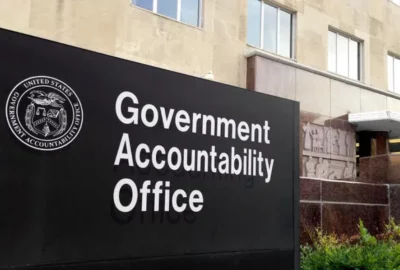Hubbard Radio Washington DC, LLC. All rights reserved. This website is not intended for users located within the European Economic Area.
She brought diversity to an under-represented group of dummies
Transportation safety in the United States has grown safer, thanks in part to work A GAO superstar. She's overseen work in crash test dummies preventing wrecks.
Transportation safety in the United States has grown safer, thanks in part to work A GAO superstar. She’s overseen work ranging from diversity in crash test dummies to preventing catastrophic train wrecks. More broadly, she’s ridden herd on transportation-related spending under the trillion dollar infrastructure law. For her work, she’s a finalist in this year’s Service to America Medals program. For more on all of this, the Federal Drive with Tom Temin spoke with Biza Repko, director of physical infrastructure issues at the Government Accountability Office.
Interview Transcript:
Tom Temin It’s nice talking about an award for you instead of some scathing or difficult report for some federal agency. Give us a sense of the architecture of your work, because you didn’t do the crash dummy work directly, but oversaw something of the National Transportation Safety Board, for example, and so on. So let’s get a sense of what you oversee at GAO.
Biza Repko Well, I lead GAO’s efforts to oversee implementation of federal transportation funding focused on surface transportation. And that includes, as you mentioned, the Infrastructure Investment and Jobs Act, which was $1 trillion of federal spending. And really, what we do at GAO is, as we examine things like the U.S. transportation system, we’re looking to make sure it’s working as it should be. So when we’re looking for gaps that there might be in federal response, and when we find them, our job is to expose them and then make recommendations that could improve the safety of that system.
Tom Temin And the citation specifically mentioned the crash test dummies, because for decades, crash test dummies at the auto safety unit there at transportation were average males in terms of physique, size and weight and so forth. But the world of driving actually is not average sized male physics. Is it?
Biza Repko True. So that work was examining the current set of crash test dummies that we have. And bottom line, we found that for at least two decades, the federal government has identified greater risk of injury and of death in vehicle crashes for certain demographic groups. Those include women, individuals over 65 and individuals with a higher body mass, but hasn’t really taken complete action to address those risks. And what you were talking about is the dummies that we have, and the height and the weight of the adult dummies that we have are based on history. And as of January 2023, we’d been using some of the adult dummies for about 15 years, and other ones we hadn’t updated since 1986. So they really no longer fully represent the average American, because we, on average, have gotten heavier since the development of those dummies.
Tom Temin Sure. And in the rail area, again, the citation noted that before that terrible East Palestine crash, that you had discovered something in your oversight work about the rail industry. That was a real surprise.
Biza Repko Yeah. So we were looking into the rail industry to try to look at certain operational practices that the rail industry was using. Some of those had to do with the length of trains and also reductions in staff. And so we collected information from, what are known as the class one railroads. Those are the largest freight railroads that we have. And we found that every company reported running longer trains. And they also reported an overall reduction in railroad staff of about 28%. And within the categories of staff, a 40% reduction in mechanical staff.
Tom Temin Meaning the potential for something catastrophic was increased because of the length and weight of the trains, and the fact that there was nobody on them after the locomotive.
Biza Repko Right. Operating a train is a complex thing to do. And when you operate a longer train, you’re adding to those complexities. So there’s things you have to worry about when you have a longer train. Some of those can be in train forces. Those are the forces that move the train back and forth on the track. If you have a longer, heavier train that can have a greater impact, making increased risks of derailment or separation. There’s things like increased wear and tear with a heavier train. And remember, all of this is happening at a time where you have fewer staff and potentially an increased need for maintenance. This creates greater risks.
Tom Temin We’re speaking with Biza Repko. She’s director of physical infrastructure issues at the Government Accountability Office, and a finalist in this year’s Service to America Medals program. And on the bigger issue of overseeing spending for transportation by different agencies, mostly within DOT, but congressionally appropriated funds. What has been the response to the findings of the GAO over the years? Do they say, yeah, you’re right, we got to fix this, or are you preaching to like, a large cemetery? There’s lots of people there, but nobody’s listening.
Biza Repko I think in general, federal agencies listen. I think in general they cooperate with the work that we do. And for the work that we’re talking about, for instance, with the crash test dummies, they concurred with the recommendation that we put forth. And in that case, we put forth a recommendation, really asking them to have a comprehensive plan that would look at the various risks to various demographic groups and also some timelines when they would take these actions, and also communicate those actions. And they’ve taken actions since our report. Our recommendation still remains open. But I think that our work can kind of push agencies to move. And in general, I think they’re cooperative about working with us and seeing the results of our work and wanting to take action to improve safety.
Tom Temin And how much of the work that GAO does in your channel is human relations, you might say, as much as fact finding? Because in many times you’re asking people to reevaluate something they might have been doing for years, when sometimes GAO recommends drastic and immediate changes to something people have been doing for years. And so there’s that human aspect that you’re all under the government tent, but there’s fiefdoms involved here.
Biza Repko I think certainly, you are someone who’s coming in externally, and you’re looking at a program potentially that someone, as you said, has worked on for years and years. But what I do find helps our work move forward is when it is fact based and data driven, and when we have the time and we’re in there for the specific reason of looking at a specific set of data. So, for instance, when we’re trying to collect data that says that trains have gotten longer, kind of compare that with other data and information there is out there about length and weight and risks. I think when you present it to people in that way, I think that’s when you can see some of the resistance fall. And I think people are very much, again, with a data driven approach, I think you really do help build coalitions and really get people on your side, because we really are all there to increase the safety of the system.
Tom Temin And with respect to highway safety, there were changes made. And now there are dummies that are shaped like women or dummies that are shaped like heavier people and so on. What about in the trains program? Which agency specifically has to do with that? And were they aware? And what changed as a result of your discovery that trains were longer and operators fewer?
Biza Repko Yeah. So the federal agency that would be responsible there is the Federal Railroad Administration. And they’ve also taken some steps based on the work that we’ve done, and some of the steps that they’ve taken relate to proposing new standards and planning requirements around train length. Also, we did some work, which you and I talked about previously, about close call reporting for trains. And in that work we found that none of the class ones, the largest railroads, were part of close call reporting, which is just reporting that helps people talk about incidents so they don’t turn into accidents. And now there are some more pilot programing where some class ones have joined that close call reporting. So you’re seeing steps being made, you’re seeing change happen.
Tom Temin Yeah. It’s surprising how many surface level crashes trains have. The internet is filled with videos of trucks being knocked to pieces by trains and so forth. I wanted to ask just a detailed question because I’m interested in this since I was a kid who doesn’t love trains. Trains rocked back and forth. Do they ever sideswipe each other because they’re too heavy and they rock too far?
Biza Repko I am not aware of any trains sideswiping each other, although I suppose it could happen. But as what we’re talking about, I was talking about those in train forces, that’s what happens. The train is going to go up and down, it’s longitude, latitude that’s going to happen on the train. And that’s where when you get a heavier, longer train, you can just have more of those forces and you have to be, it’s like I said, more complicated to operate that train.
Tom Temin Which brings up a bigger question. And that is sometimes GAO is dealing with federal agencies at the behest of Congress. But there are third parties here, in this case, a regulated industry, for example. And how does that figure into the equation? And do you find that at least they respect findings that come from the government?
Biza Repko Yeah, I think a large part of our work in the transportation space relates to private industry, and we found private industry to be cooperative in this work that we did. We were one of the main sources because there isn’t a comprehensive, publicly available set of data on train feet in length. So we had to collect it. We did collect it from the class ones and they did give us that information. So I feel like they are cooperative with us. And part of their job is to increase safety for their workers and for the goods that they’re trying to move, or for the people that they’re trying to move for their passengers. And so I think that they generally give us information and are open to hearing what our findings and recommendations are.
Tom Temin Sounds like you like your work.
Biza Repko I do, I like my work. It’s very interesting, and I really do enjoy working on transportation. I feel like transportation is something that affects everybody. Everyday in our life we use transportation to connect with each other. How we get to work, how we get to school, medical appointments, see people we love. And I think the safer we can make that system, the more reliable we can make that system, the better it is.
Copyright © 2024 Federal News Network. All rights reserved. This website is not intended for users located within the European Economic Area.
Tom Temin
Tom Temin is host of the Federal Drive and has been providing insight on federal technology and management issues for more than 30 years.
Follow @tteminWFED
Related Stories
Federal security agency struggling with new IT system for tracking contract guards
Related Stories
-
GAO reviews how the VA is training its claim processors Agency Oversight





